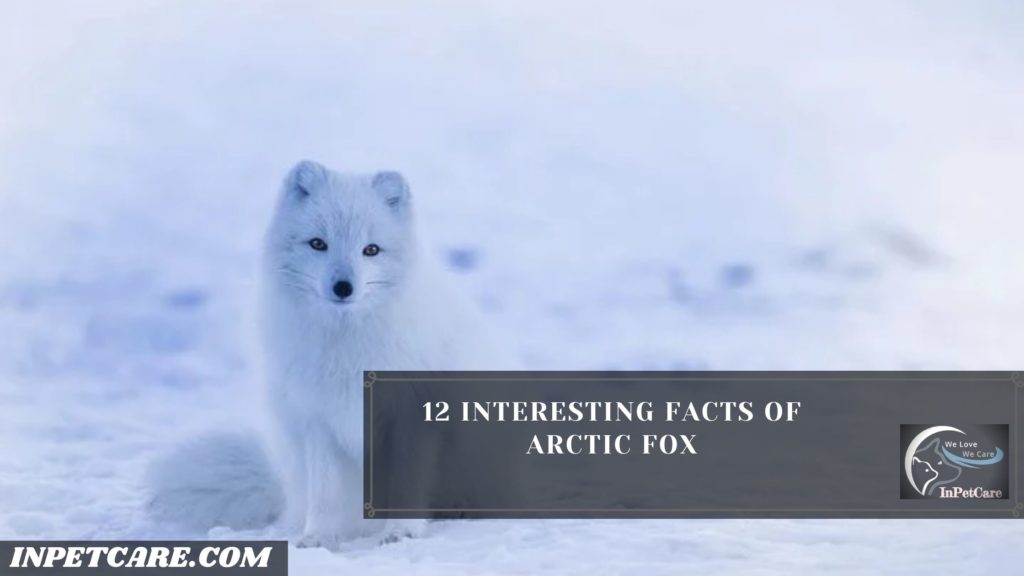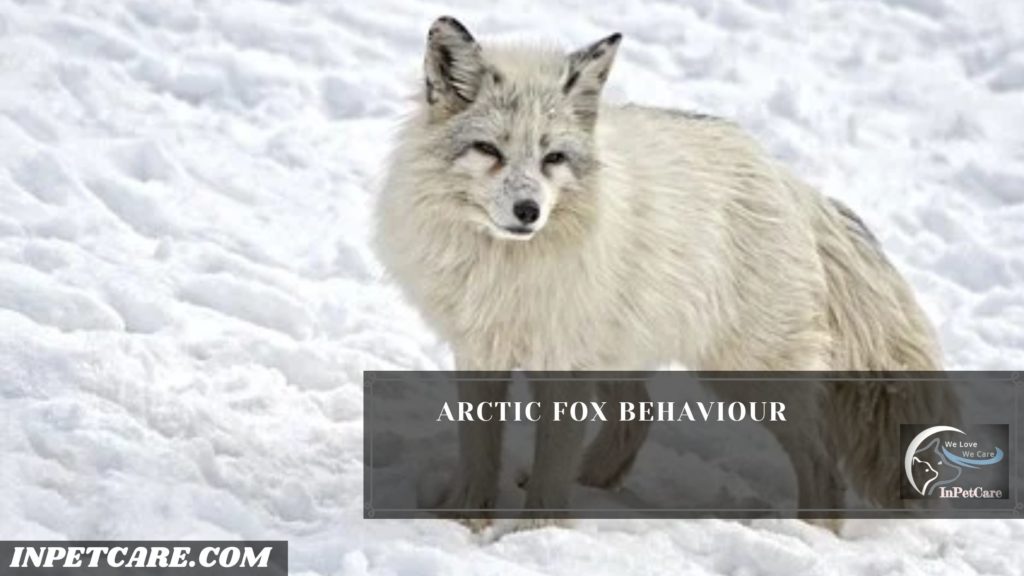The Arctic Foxes are amazing little foxes and have a very thick double-layered coat, making them an animal that can survive in cold temperatures, almost down to -58 degrees Fahrenheit.
arctic fox as a pet
Arctic foxes have a muzzle, short ears, and furry pads on their feet. These specific characteristics help them to survive and adapt to a harsh winter climate.
You can expect the color change of their coat to a more blue-ish gray during summer but it turns back to its normal white color as soon as the winter season begins.
This guide is to clear your doubts about whether you can keep an arctic fox as a pet or not? and what happens when you keep an arctic fox as a pet.
Post Contents
- Quick Peek at Arctic Fox Nature (Quick Overview)
- Arctic Foxes as a Pet
- 12 Interesting Facts of Arctic Fox
- Arctic Fox Behaviour
- FAQ
- What do arctic foxes eat?
- What should I feed an Arctic fox?
- How Arctic Foxes Breed?
- What does it feel like to have an arctic fox as a pet?
- How often does the Arctic fox eat?
- What Predators Eat Arctic Foxes?
- Where Do Arctic Foxes Live?
- Can Arctic foxes Mix with Red Foxes?
- Conclusion
Quick Peek at Arctic Fox Nature (Quick Overview)
They like to feed and hunt on birds, fish, eggs, rodents, and carrion. They usually live in burrows to stay warm as well as to protect themselves from predators. The arctic fox has a good balance due to its long tail, just similar to a cat.
In captivity, they can almost live 12 to 14 years but in the wild, their life span falls harshly and has an average lifespan of 3 to 6 years. Due to their thick and major fur, they weigh in a range of 6 to 17 pounds.
In the summer season, their coat changes to a darker color, and in the winter season, they have a white color coat.
arctic fox as a pet
Notice: Don’t make a Copy of Our Post ” Arctic Fox as a Pet “
Arctic Foxes as a Pet
The biggest problem of having an arctic fox is its smell. They have very odorous urine just as similar to the spay, a skunk would emit and also secrete odor from glands beneath the fur.
They are also very hard to train and are extremely disobedient. They are also described to be stubborn and temperamental. But you can train them, you just need to put more effort and time than you would have for dogs.
I have seen many peoples keeping them as pets, so they can be kept too. They need a large outdoor encloser because they are very active animals compared to other foxes.
They are also very destructive just like red foxes. They can get bored easily and start chewing your home furniture and pieces of stuff. You will need to take them out so that users and spend their high energy on playing and running.
They need plenty of attention compared to other pet foxes and need more human interaction. You must give them more human interactions than you would have given to a dog. They tend to be fearful of humans.

Read More
Fennec As A Pet – Pros & Cons (+Photos) 2020 Updated
If you are thinking about adopting one, then it will be best if you adopt an arctic fix early. Otherwise, it can create multiple problems like fear of the owner, not proper socialization, etc, once they start to grow. Adopt a young arctic.
They can easily get along with other dogs but not with small animals like birds, rabbits, cats, or guinea pigs.
12 Interesting Facts of Arctic Fox
arctic fox as a pet

- They live in the burrow to protect themselves from cold and predators.
- Female Arctic fox has a large litter of 5 to 8 pups and usually gives birth in the spring.
- They are monogamous and omnivores animals.
- Arctic fox size is like a large domestic cat.
- They are the smallest canid found in Canada
- They are mostly found throughout the entire Arctic tundra.
- They have the Warmest belt compared to any other animals found in the Arctic.
- Arctic foxes’ fur changes its color with the season.
- They do not Hibernate.
- They are a member of the canid animal family.
- They are popular for their unique hunting style
- They can easily adapt to the harsh frigid temperature of the Arctic.
Arctic Fox Behaviour

Arctic Fox as a pet doesn’t work well. Their Primary Instinct is to hunt and kill small rodents.
They are precise hunters. Their thick fur helps them to survive in cold winter and prey under the snow. They can find or locate their prey beneath the snow, because of their wide ear.
As soon as they hear its prey, they pounce through the snow by leaping into the air.
FAQ
What do arctic foxes eat?
The Arctic fox is an omnivore and in the wild, they feed and hunt on plants, insects, birds, reptiles, eggs, berries, crabs, rabbits, guinea pigs, mice, seeds, Carron, fungi, fish, frogs, squirrels, and chipmunks fish, fruits, and veggies if they feel or need to.
What should I feed an Arctic fox?
Well, they are omnivores and their diet must reflect what they have in the wild. Their diet mainly consists of plants, insects, rabbits, guinea pigs, mice, seeds, Carron, fungi, fish, frogs, squirrels and chipmunks fish, fruits, and other small animals
Read More
Does Fox Make Good Pets? – A complete Guide
They are not picky eaters and unlike other foxes, they don’t have specific diet restrictions.
Since they are usually and generally live in a region with a colder climate, they prefer to eat meat most of the time and their majority of diet consists of mice and small rodents.
They pounce through the snow to hunt or catch their prey or victim when they hunt in the wild.
How Arctic Foxes Breed?
Arctic fox becomes active only in the spring, from September to May. In Carnivora’s order, they have the largest reproduction rate with an average of 6 to 7 kits but many reports show arctic fox can have 25 kits a year.
They have 52 days of gestation. As soon as the mother arctic fox gives birth, the father helps to raise and feed the young.
What does it feel like to have an arctic fox as a pet?
They have very interesting & unique behaviors and traits that keep their owner captivated and interested. You will find them fun, enjoyable, cute, and adorable only when they are kits or young. You will have an amazing experience with bonding and living with an arctic fox
As soon as they start to grow up, You will start facing and experiencing problems like bad behaviors, bad body odor, and many others. Keeping Arctic Fox as a pet can be fun.
How often does the Arctic fox eat?
It depends, as in winter they may need to eat more meat than veggies or berries. But in summer, their diet routine would be similar to dogs. Meat is their primary source of energy and warmth in winter. So, they may hunt two or three times a day. You can also find them hunting in daylight in winter.
What Predators Eat Arctic Foxes?
In the wild, Arctic foxes are most vulnerable and prone to attacks from Arctic wolves, polar bears & snowy owls, as these guys are stronger, bigger, much better built, and also are efficient pack hunters. But mostly humans hunt them for their skin, which makes humans the ultimate threat to arctic foxes. 🙁
Where Do Arctic Foxes Live?
Arctic foxes can be found in Canada, Russia, Norway, Alaska, Iceland, and Scandinavia. One of the amazing facts about arctic foxes is, you will find them blend in pure white color throughout the winter and in brown color throughout the summer. They can be found throughout the entire Arctic tundra.
Can Arctic foxes Mix with Red Foxes?
Yes, they can be mixed with the red foxes but in captivity only. Even they are seldom crossbred, they still belong to the same genus. But in most cases, red foxes usually hunt an arctic fox, as they are larger and stronger than arctic foxes. Breeding between two of them is possible but only in captivity
.
How much does an arctic fox cost?
Well, it depends on your location and breed purity. However, a baby arctic fox can cost you around 3,500 dollars to 5,000 dollars or more if you are purchasing it from a licensed breeder. The price of foxes is increasing day by day as in the year 2010, they used to cost 800 dollars to 1,200 dollars. However, Keeping Arctic Fox as a pet is not recommended
How can I get a Pet Arctic Fox?
You can purchase an arctic fox from a reliable pet seller or a licensed breeder. Certainly, Capturing a fox in the wild is not allowed in most of the states of the US. You can also visit ExoticAnimalsForSale and check if it is available there.
Is it legal to Keep an Arctic Fox as a Pet in the US?
Yes, it is legal in many states of the US to keep an arctic fox as a pet but it is not recommended because they are very tame animals. By the word tame, I mean – they are only nice and cute when they are young. Once they reach their sexual maturity, they become extremely disobedient. Keeping Arctic Fox as a pet doesn’t work well and is not recommended.
Conclusion
Have you really made up your mind about adopting an arctic fox? Why are you choosing an arctic fox? are you choosing an arctic fox only because of its pure white color?
Well, let me clear out, something for you, you will find their body in white color only in winter, as soon as summer begins, their fur color changes to greyish color ( almost black).
Arctic foxes are also very high-energy animals and they need an outdoor enclosure to run and play. They may follow your command when they are kits or young but as soon as they reach their maturity, they become very disobedient as they have their own will.
Arctic Fox as a pet doesn’t work well. It seems like you got an idea of what happens when you keep an arctic fox as a pet
They don’t bother to entertain their master unlike dogs and it is extremely hard to train them. In general, people who already kept an arctic fox as a pet told me to Don’t ever think about buying one or you may end up sending them to the zoo.
They are very odorous and their only instinct is to hunt and kill small animals. So, if you already have small pets in your house, then it’s better to avoid buying one. Keeping Arctic Fox as a pet is highly not recommended.
But still, if you won’t have your own fox then let me down below ” why an arctic fox as a pet” and if you have any queries or you would like to add something, the comment box is always open for you. You can always find me in the comment section. 🙂

94% of pet owners say their animal pal makes them smile more than once a day. In 2007, I realized that I was made for saving Animals. My father is a Vet, and I think every pet deserves one. I started this blog, “InPetCare”, in 2019 with my father to enlighten a wider audience.
